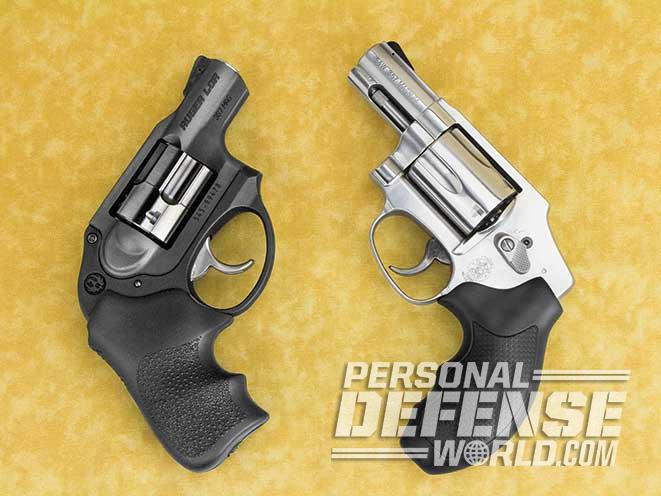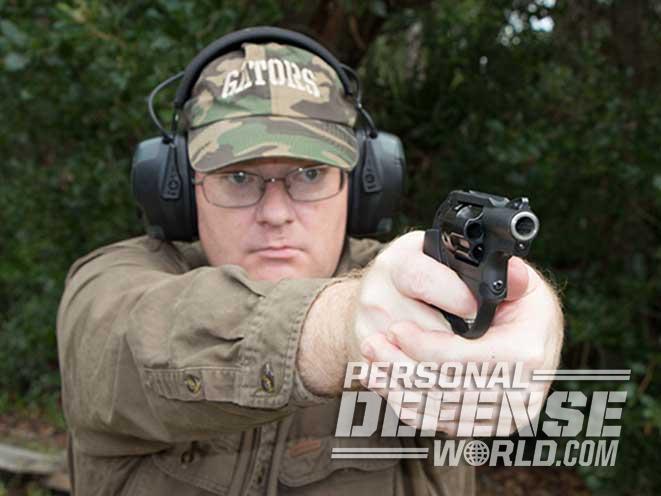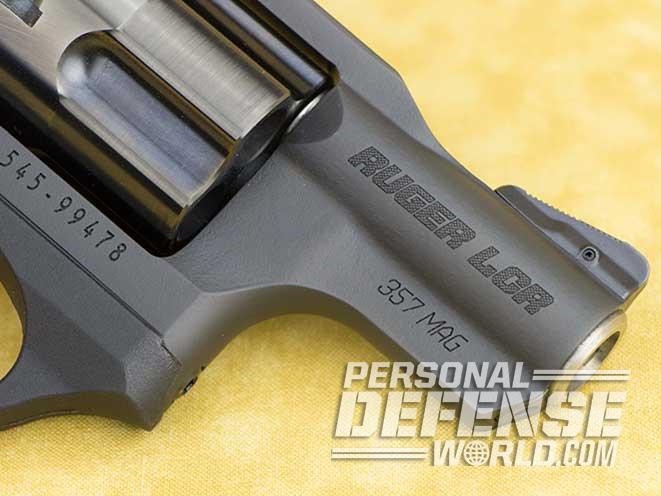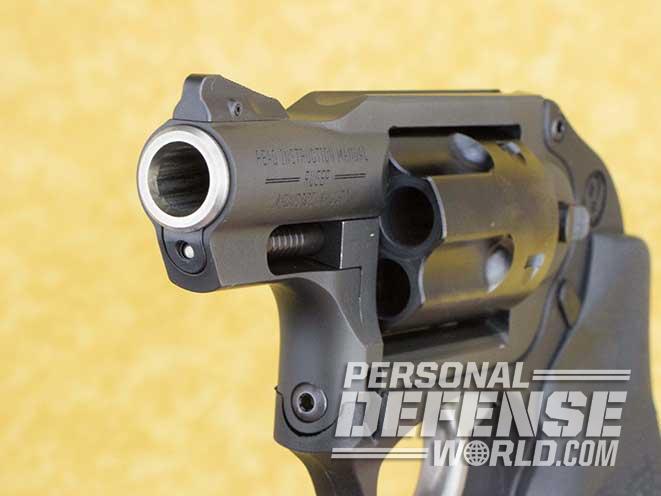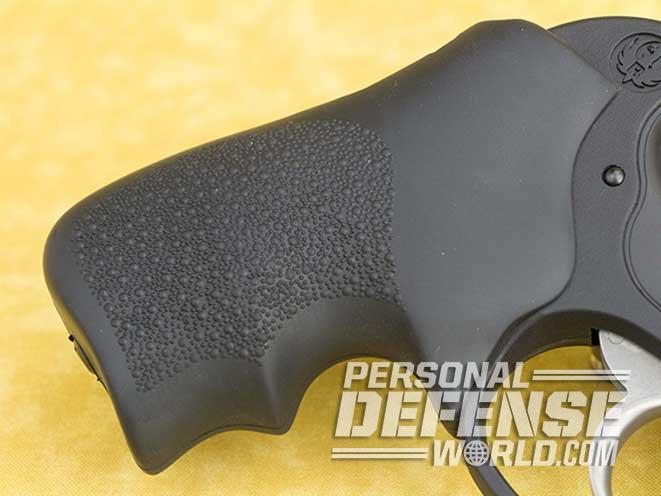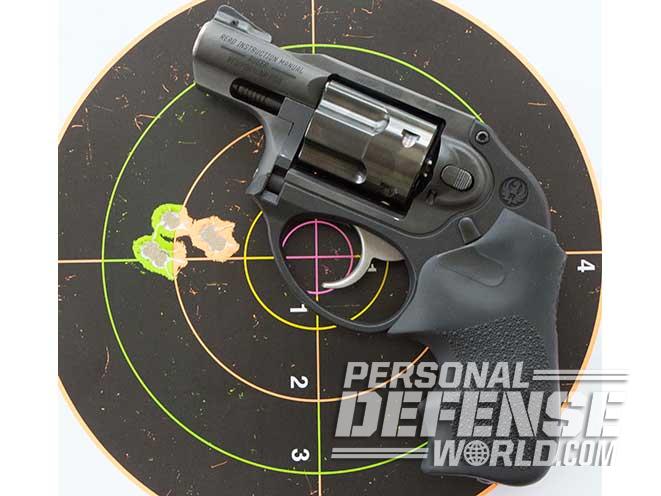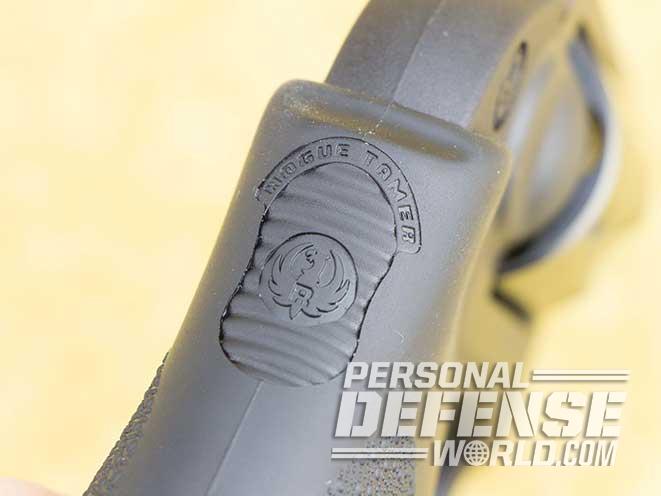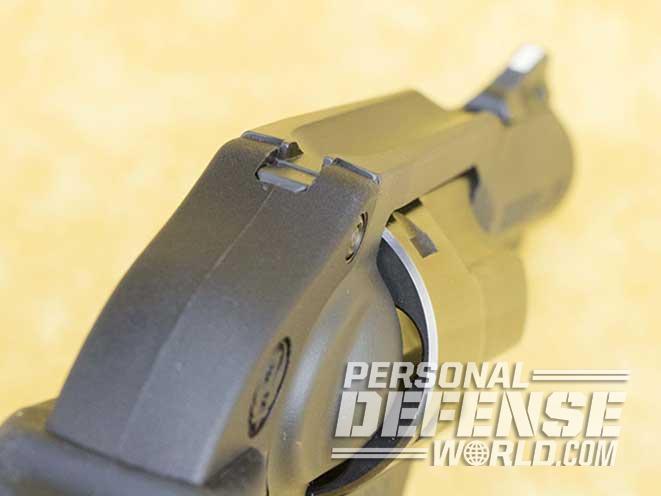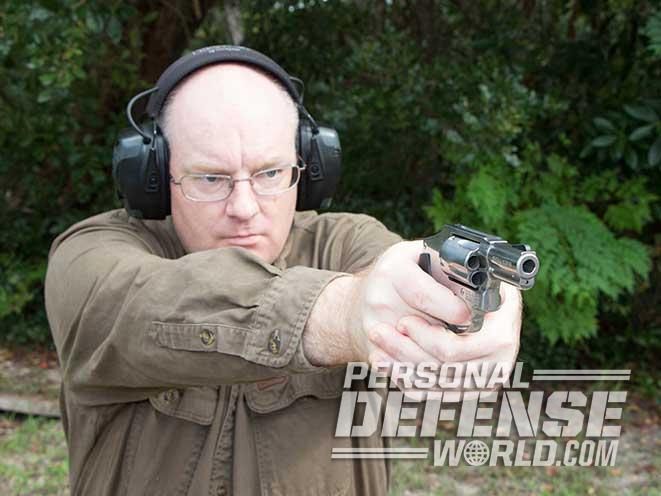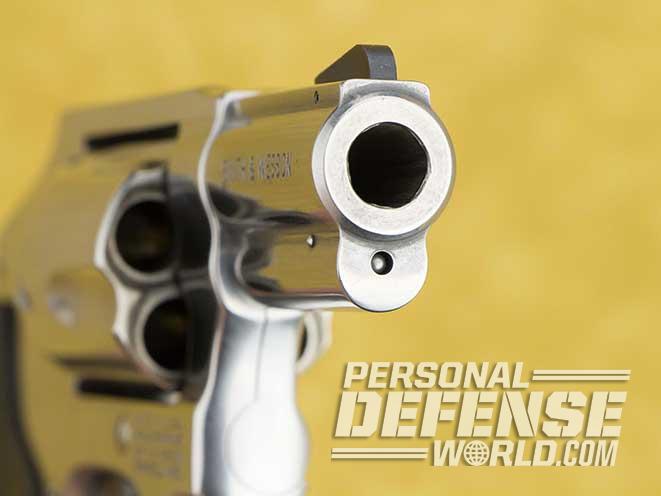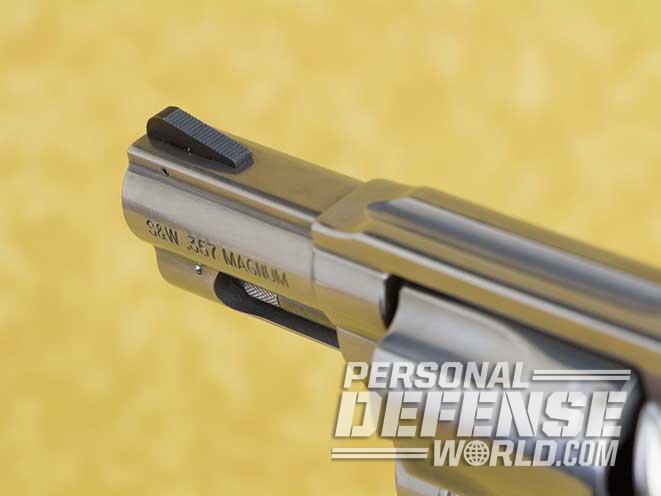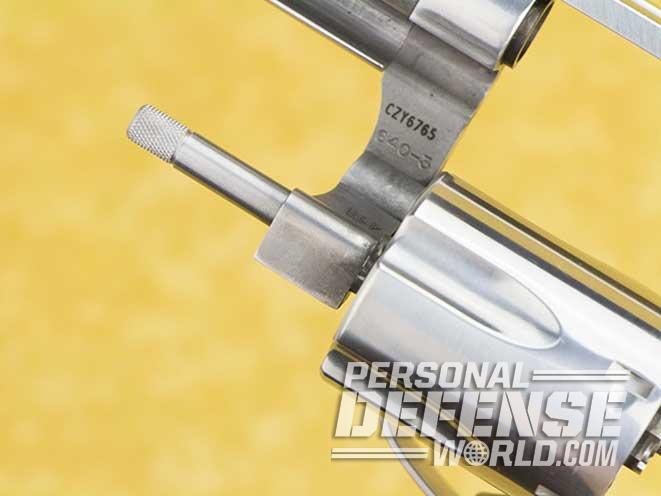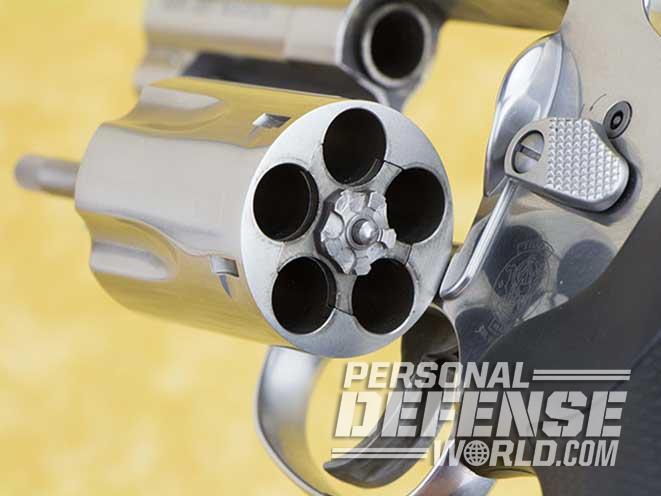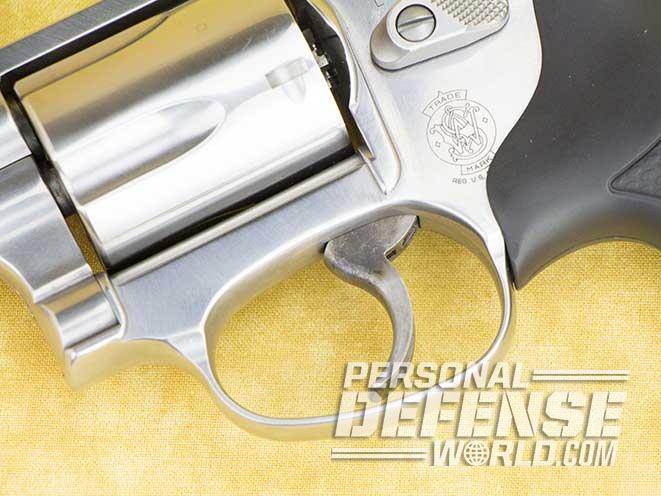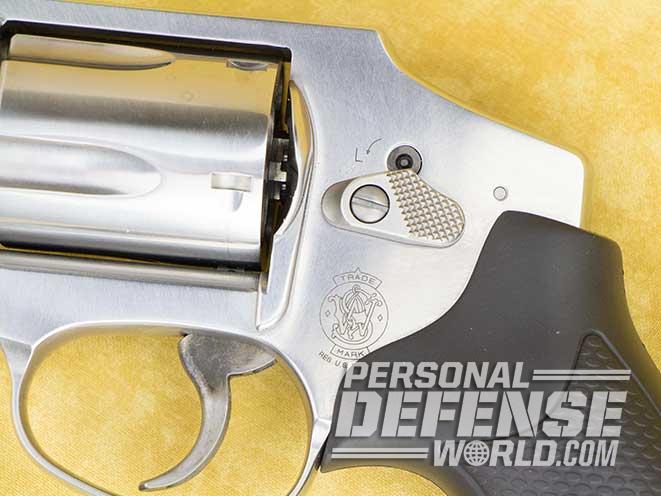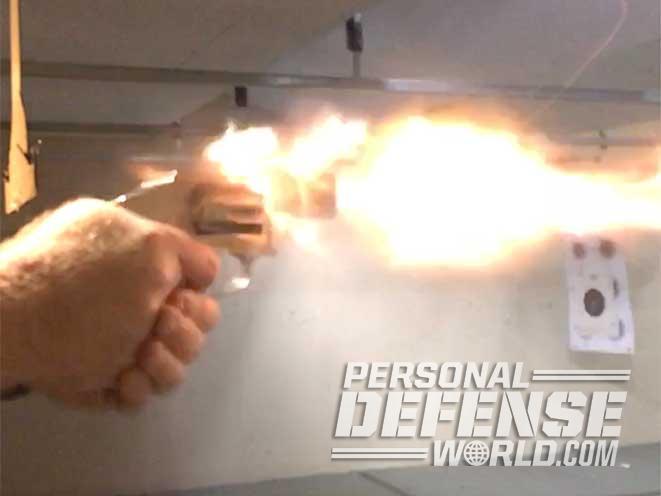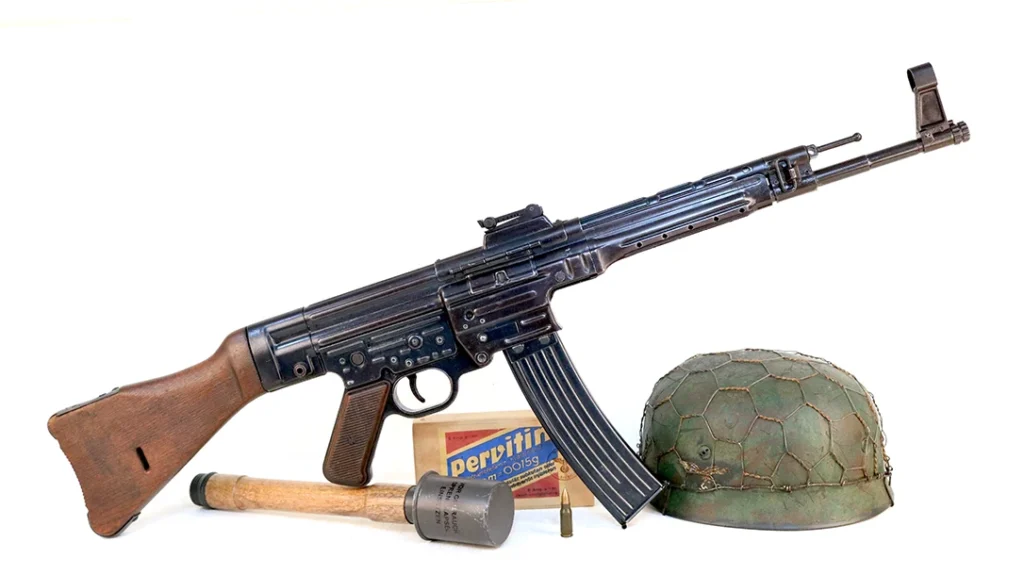Pocket flamethrower. Fistful of thunder. These are just two of the terms I’ve heard for small-framed .357 Magnum revolvers. Without a doubt, full-bore .357 Magnum loads are impressive in terms of recoil, noise and terminal effectiveness. Their muzzle flash can be equally impressive.
For many years, the .357 Magnum was considered the man-stopper. The 1980s saw the beginning of a mass migration toward semi-automatic pistols, and in the 1990s, bullet designs improved to the point where there wasn’t as much of a difference between handgun calibers as there once had been. The loud and proud .357 Magnum began to fall out of favor.
So, does the .357 Magnum still have a role in the modern world? Unequivocally, yes. The power of the .357 Magnum, combined with the improved performance of modern bullet designs, suggests that it may be more potent than ever. In addition, many people simply prefer a double-action revolver for self-defense. While there may be fewer snub-nose revolver buyers today, it is still a large market. Fortunately, both Smith & Wesson and Ruger serve these shooters with a pair of similar, yet very different, guns.
Advertisement — Continue Reading Below
The Contenders

When the LCR was introduced, I knew Ruger had something special. The LCR is a unique revolver with a polymer fire control housing mated to a stainless steel frame. While the frame provides the strength and durability needed in a magnum handgun, the polymer housing allows the company to shave weight from the gun. Some have theorized that the polymer also reduces felt recoil due to minute flexing in the material.
Advertisement — Continue Reading Below
Another LCR innovation is the company’s friction-reducing cam system that offers a smooth, consistent trigger pull. Combined with a shock-absorbing Hogue Tamer Monogrip and a replaceable front sight, the LCR has plenty to offer a shooter needing a small-framed wheelgun. A matte black finish is standard.
- RELATED STORY: Gun Review – Ruger’s New Model Blackhawk Revolver
Now for the other gun in our matchup. For decades, Smith & Wesson has made J-Frame revolvers in a range of calibers, including the .357 Magnum. One of the company’s most popular designs is the Model 640. Like the LCR, the Model 640 is a double-action-only (DAO) wheelgun with an internal hammer.
The gun uses a stainless steel frame that extends all the way down to its round butt, and is clad in a synthetic grip. The barrel, cylinder and frame all have a satin stainless finish. The front sight is a pinned ramp that can be replaced if so desired.
Advertisement — Continue Reading Below
Both guns offer a great deal to appreciate from a self-defense perspective yet are very different. If you are looking for a snubbie magnum, how do you select between these two? Perhaps this head-to-head comparison will help.
Round 1: Reliability

One of the primary reasons many people consider a revolver for self-defense is reliability. While problems can occur with a wheelgun, they tend to run more reliably than semi-automatic pistols. I had high expectations for both guns in terms of reliability. When it came to making loud noise, both performed admirably. Both the Ruger and S&W fired all of the test ammunition without any problems.
There is another aspect to reliability, however: extracting spent casings. When a round is fired, the case expands to fit the shape of the inside of the cylinder. As a result, a spent case is more difficult to remove from a charge hole than it was when you slipped the unfired round into it. This is the reason the revolvers are equipped with an ejector star attached to an ejector rod—to push the empty brass out of the cylinder.
Advertisement — Continue Reading Below
With a swift strike to the ejector rod on the Model 640, the empties were easily extracted from the cylinder and dropped free, allowing for an immediate reload. This wasn’t always the case with the LCR, however. Sometimes the empty cases would hang slightly after being extracted and had to be brushed away. It appears that the additional quarter inch or so of length on the S&W’s ejector rod allowed it to more reliably extract the spent cases.
Advantage: Smith & Wesson
Round 2: Trigger Pull
Advertisement — Continue Reading Below

You can measure the trigger pull weight, but the key feature for me is the trigger’s feel. That is necessarily something far more subjective. My test Model 640 had a smooth trigger with no perceptible take-up or overtravel. As with most Smith & Wesson revolvers, it has a strong return, so running it fast is no problem.
The LCR had a smooth, and noticeably lighter, trigger pull. While the pull was not light by semi-automatic standards, it seemed much easier to stroke than other DAO wheelguns. There was a slight amount of take-up at the start of the pull with a hint of overtravel after firing. Neither of these seemed to affect accuracy.
While I liked the pull of the LCR quite a bit, the return was not as strong as that on the S&W gun. If you fail to let the trigger completely out before pulling it again, it may not rotate the cylinder to a fresh cartridge. I experienced this problem when I first shot another Ruger LCR several years ago and have since trained myself around it. Depending on your past experience with double-action revolvers, you may also need some practice to avoid this issue.
Advertisement — Continue Reading Below
Advantage: Tie
Round 3: Accuracy

Short-barreled revolvers can get a bad rap for being less accurate that their longer-barreled brethren. While there are some inherent accuracy advantages to some larger guns, many, if not most, of the accuracy problems with small wheelguns come from the shooter.
Advertisement — Continue Reading Below
Anticipation of recoil, a shorter sight radius and a smaller grip are all things that can affect a shooter’s ability to put rounds on target.
Both of these wheelguns had greater potential accuracy than I was able to wring out of them. However, my practical accuracy with a two-handed grip was still pretty good. With all of the defensive loads I tried, both guns shot groups smaller than 2.5 inches at 7 yards.
The Hornady Critical Defense ammo was the best of the bunch in both guns, and it produced significantly smaller groups with the LCR than the Model 640. In fact, two of the three defensive loads I tested showed better groupings with the LCR, though the groups with the other loads were much closer in accuracy.
Advertisement — Continue Reading Below
Advantage: Ruger
Round 4: Recoil

Before shooting these two guns side by side, I anticipated that the LCR would be easier on the hand than the Model 640. After all, the Ruger had a wider grip with a special soft, recoil-absorbing area where it meets the web of the hand. On the other hand, Smith & Wesson used a narrower grip that I expected to hit the web of the hand like a dull knife. I was wrong on both accounts.
- RELATED STORY: Gun Review – Ruger 22 Charger Takedown Pistol
I was surprised to find that it was easier to control the recoil and muzzle flip with the Smith & Wesson Model 640. All snub-nosed magnum revolvers have heavy recoil—that’s life. While the LCR was very controllable, I found the Model 640 had less muzzle flip and was easier on the hand than its counterpart. I suspect that the additional weight from the all-stainless-steel construction helped with that. Also, even though the S&W grip was thinner, it was also longer, allowing me to get my pinky on the gun, rather than curling it up underneath.
Advantage: Smith & Wesson
Round 5: Concealment

Both guns are well suited for concealed carry. They are relatively small and have plenty of support from holster manufacturers. With an inside-the-waistband (IWB) rig, a belt slide scabbard or a shoulder holster, the guns are fairly equal. The only real difference is weight: The Smith & Wesson is about 6 ounces heavier.
For pocket carry, both will work in pants with large pockets. For smaller pockets, both of these guns will struggle a bit with neither being terribly good for tailored pants or fitted jeans. The Ruger LCR’s shorter grip and barrel give it the edge in some circumstances.
Advantage: Ruger
Round 6: Fit & Finish

Both companies make high-quality products, and these compact snub-nosed revolvers are excellent examples. Neither gun has a clear advantage in the fit and finish category, as I could find no obvious problems with the way either was built or finished. The obvious visual difference—matte black or satin stainless—is purely a personal preference.
- RELATED STORY: 5 Compact Smith & Wesson Handguns
Advantage: Tie
The Verdict

I define “value” as the point where quality and price meet, offering the maximum amount of performance for the least amount of money. A $5,000 pistol may work great, but if it isn’t any more reliable or efficient than a $500 pistol, I don’t believe it is as good a value as a self-defense firearm.
Since both the LCR and Model 640 performed extremely well, the value comes down to price in this head-to-head matchup. Ruger sets the suggested retail price of the LCR at $669, while the S&W comes in at a slightly higher $729. This gives the advantage to Ruger. However, it should not preclude the Model 640 from your list if you are shopping for a new revolver. These two guns are significantly different, and each offers advantages over the other. Finding the one that you shoot well, regardless of the price, is the real value.
This article was originally published in ‘Handguns Buyer’s Guide’ 2017. For information on how to subscribe, please email subscriptions@
